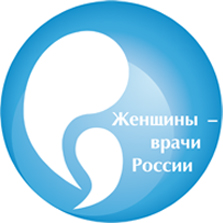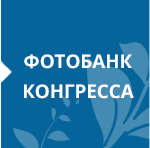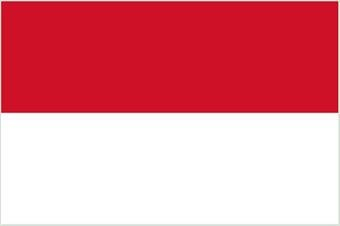
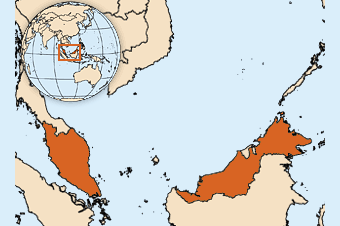
Indonesia
1. Statistics
Total population (2016) 261,115,000
Gross national product per capita (in international PPP dollars, 2013) 9,260
Life expectancy at birth m / f (years, 2016)
Probability of dying (per 1,000 live births, 2018) under five years of age 25
Probability of death at the age of 15-60 m / f (per 1,000 people, 2016) 205/146
Total health expenditure per capita (Int. Dollars, 2014) 299
Total health expenditure as% of GNP (2014) 2.9
2. General information
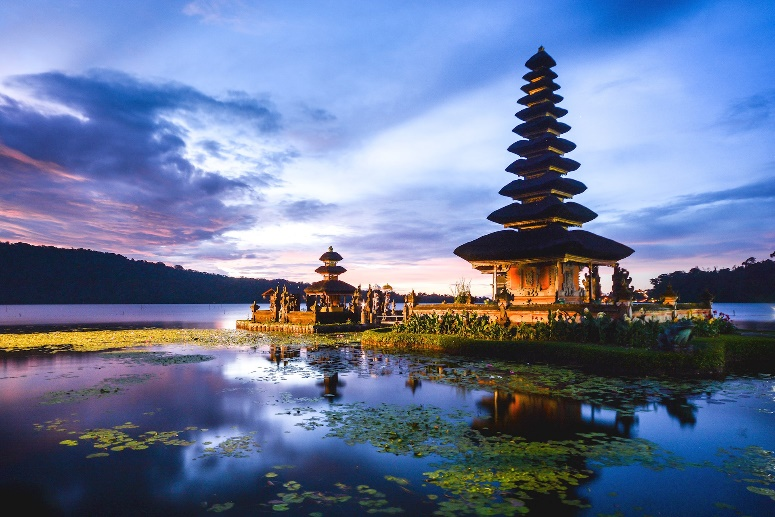
Indonesia is a state in Southeast Asia, located on the islands of the Malay Archipelago. On the island of Kalimantan it borders on Malaysia, on the island of New Guinea - on Papua New Guinea. In general, the country consists of 13,500 islands, of which 6,000 are inhabited, the largest islands are Sumatra, Java and Kalimantan. Indonesia is washed by the Pacific and Indian Oceans, the Andaman, South China, Javan, Arafur, Timor seas, the Sulawesi and Banda seas. The total area of the country is 1,919,440 km2 (land area - 1,826,440 km2). More than half of the entire territory of the country is occupied by mountains. The presence of more than 400 volcanoes, among which more than 100 are active, indicates the lack of geological stability.
Mineral resources: natural gas, oil, nickel, tin, copper, coal, bauxite, gold, silver, timber. Arable land occupies 8% of the territory, forests and shrubs - 67%.
In Indonesia, there is practically no change of seasons. The main features of the climate: constantly high temperatures with an average monthly temperature of 24 ° C, abundant precipitation, weak winds, high relative humidity (80-90%). In the mountains, the temperature decreases and at an altitude of 3,000 m it is already kept at the level of 0 ° С. The seasonality of the climate is expressed in the amount of precipitation: the wet season lasts from November to March, dry - from June to October. On average, Indonesia receives about 2,000 mm of precipitation per year. The driest place - in Sulawesi - receives about 540 mm of precipitation per year. Indonesia is characterized by a constant weather regime during the day: a clear morning, increasing heat and cloudiness by noon, a thunderstorm and a tropical downpour in the afternoon, lasting about an hour, then everything calms down, and in the evening, quickly, practically without twilight, darkness sets in.
More than 2,000 species of trees grow in the tropical forests of the islands, including about 300 species of palms, up to 30 species of mangroves, bananas, bamboo, cotton trees, dwarf palms, tree ferns, banyan tree grove. Teak, eucalyptus, many orchids, ferns, mosses grow in Java. Of the fauna representatives, only in Sumatra and Kalimantan are found the Malay bear and the great orangutan ape, and in Sulawesi - the unique dwarf bull anoa and the wild pig of Babirus. The islands are inhabited by various species of monkeys and lemurs, Kalong flying dogs, several species of tree kangaroos, couscous, and numerous small rodents. The world of birds is diverse: eagles, hawks, owls, storks; there are a frigate bird, hornbill, cockatoo, cassowary, bird of paradise. Reptiles are numerous: crocodiles and narrow-necked gavials, monitor lizards, agamas, geckos and the world of insects is endlessly rich.The state system is a presidential republic. The country consists of 24 provinces, two special regions and one special capital region (Jakarta). Bali Island (one of the Lesser Sunda Islands) is one of the centers of Indonesian culture, called the "Island of a Thousand Temples" (the most beautiful is the Singsida Temple).
3. Indonesia health care system (prevention system)
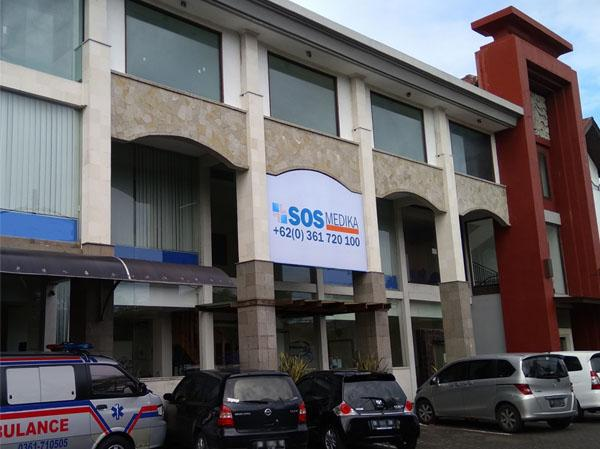
In Indonesia, major efforts have been under way for several years to improve access to health care, including the implementation of a national health care system, but to this day many urban areas remain “disadvantaged”. The health status of a population and people's access to services are determined by many factors, including age, gender, economic status, educational level, employment and place of residence.
With evidence that, for example, only 30% of Senen residents use a local health center, the government launched a m-health initiative called Hibiscus to expand access to health care. The objective of the initiative is to directly provide quality services in the form of antenatal care, HIV testing, mammography, immunization, and health education.
To address inequalities in health care and prioritize areas for action to achieve universal health coverage, the government needs to assess the extent and extent of inequalities in the country. Between April 2016 and October 2017, the Indonesian Ministry of Health, together with WHO and a coalition of stakeholders, conducted a country assessment of health inequalities in 11 areas, such as maternal and child health, immunization coverage and the availability of health facilities.
“Some Indonesians have easy access to health services and preventive interventions, while others are at a disadvantage,” said Dr Siswanto, head of the Indonesian Agency for Health Research and Development under the Indonesian Ministry of Health. “Monitoring inequality is fundamental to improving the health status of marginalized populations and ensuring that the country meets the 'no one should be left behind' commitment.”
A key concrete result of the monitoring activities is a new report entitled The State of Inequality: Indonesia. This is the first WHO report to provide a comprehensive assessment of health inequities in a Member State. The report summarizes data on more than 50 health indicators, disaggregated by dimensions of inequality, such as household economic status, educational attainment, location, age and sex. The report's authors believe that the health situation and access to health services are not uniform across Indonesia, and identify a number of areas for action. These measures include, inter alia: improving the situation with exclusive breastfeeding and nutrition for children; increasing equity in the coverage of antenatal and obstetric care by skilled health personnel; a decrease in the prevalence of smoking among men; provision of mental health services and provision of services to people of different income levels; and reducing inequalities in access to improved water and sanitation facilities. In addition, many medical centers in the country remain understaffed with medical personnel, with a particularly acute shortage of dentists and midwives.
3. The most well-known Bali private clinics
BIMC clinics in Bali are located in Kuta and Nusa Dua. These are the first clinics in all Indonesia to be accredited by the Australian Health Standards Board. Their features are a high level of medical personnel and impressive prices for services. In the clinics of this company, foreigners are mainly treated. In the event of difficulties in communication (due to the language barrier), they can be overcome, since there are not only good English speakers, but even Russian-speaking doctors. It is recommended to enlist the support of an insurance company by drawing up an appropriate contract, since not every tourist will be able to pay for the treatment himself. An initial appointment with a doctor, for example, costs $ 100, and a house call is even more expensive. An ultrasound scan costs $ 250, and an analysis for Dengue fever costs $ 50. It is necessary to prepare for the risk of illness by choosing an insurance company in advance. The most complex operations are performed in BIMC, therefore, in severe cases, most patients come there.
Text translated by a representative of Russian Medical Women Association Bondarenko Anastasia.
